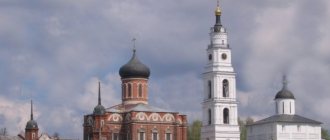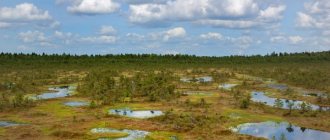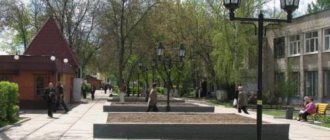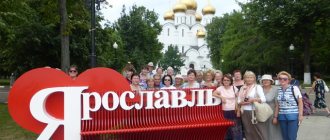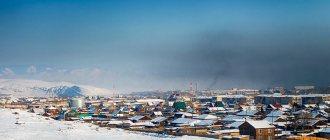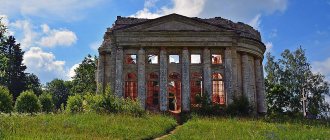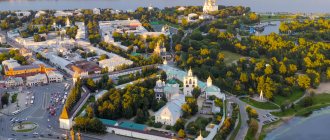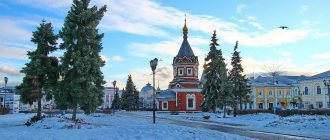Who hasn't heard of Yaroslavl! And I know him firsthand. I've been there more than once, and I adore this city. I just love to walk along it and look at it.
After all, this is one of our oldest Russian cities (so ancient that it remembers the invasion of the Tatar-Mongols ). It is part of the Golden Ring of Russia (it even claims to be the capital of this ring). Named in honor of its founder – Yaroslav the Wise. Very beautiful, with many temples, bell towers, interesting buildings, monuments, parks ... The embankment there is amazing , large, with viewing gazebos and linden trees.
huge have been shot in Yaroslavl :
- "Crew";
- "Big change";
- "Yesenin";
- “Afonya” (there is even a monument to the film);
- "Palmist";
- "Kotovsky".
It’s impossible to list everything!
In my city there is no such architectural and historical wealth, so I walk around Yaroslavl with my mouth open: I like everything there!
TO
- Kablukovo - village
- Kalachikha - village
- Kalenki - village
- Kalikino - village
- Kalinino - village
- Kalintevskaya - village
- Kamenka - village
- Karabikha - village
- Karachikha - village
- Karpovskoye - village
- Kipelki - village
- Kleschevo - village
- Klimovskoye - village
- Klintyevskaya - village
- Klyuchi - village
- Kobylyaevo - village
- Kozlovo - village
- Kozlyatevo - village
- Kazulino - village
- Kozulki - village
- Kozmodemyansk - village
- Kozmodemyansk - village
- Kolesovo - village
- Kolechkovo - village
- Kolobikha - village
- Kolokunovo - village
- Kolokunovo - village
- Colomino - village
- Komarovo - village
- Konishchevo - village
- Konishchevo - village
- Koposovo - village
- Koptevo - village
- Kopytovo - village
- Korgish - village
- Korznovo - village
- Kormilitsino - village
- Kormilitsyno - village
- Kornevo - village
- Korobovo - village
- Korovaytsevo - village
- Korolevo - village
- Koryukovo - village
- Kostino - village
- Kostyaevo - village
- Kotelnitsy - village
- Kotovo - village
- Kochaevo - village
- Kochegino - village
- Kochenyatino - village
- Kochenyatino - station
- Kraskovo - village
- Krasnaya Gorka - village
- Krasnoye - village
- Red Village
- Red Weavers - village
- Krasny Bor - village
- Krasny Bor - village
- Krasny Volgar - village
- Krasny Kholm - village
- Kryukovo - village
- Kryukovskoe - village
- Kuvshintsevo - village
- Kuznechikha - village
- Kuznechikha - village
- Kuznechikha - village
- Kuzmino - village
- Kuzminskoye - village
- Kulnevo - village
- Kurba - village
- Kurdeevo - village
- Kurdumovo - village
- Kurilkovo - village
- Kurilovo - village
- Kurilovo - village
- Kurichyogo - village
- Kurmanovo - village
- Kustovo - village
Settlements that have lost city status
| Locality | Obtaining PGT status | Abolition of PGT status |
| Red Pass | 1928 | 1944 |
| Dunilovo | 1950 | 1970 |
| Tikhmenevo | 1950 | 1999 |
| Kubrinsk | 1974 | 1993 |
| Breytovo | 1986 | 1991 |
| Red Weavers | 1927 | 2018 |
| October | 1957 | 1995 |
| Abbakumovo | 1927 | 1940 |
| Gavrilov-Yam | 1927 | 1938 |
| Busts | 1942 | 1944 |
| Sand | 1927 | 2011 |
| Berendeevo | 1944 | 1993 |
| Varegovo | 1934 | 1992 |
| Myshkino | 1943 | 1991 |
| New Nekouz | 1975 | 1993 |
| Sheksninsky | 1943 | 1944 |
| Volga | 1927 | 1996 |
| Bolshoye Selo | 1971 | 1992 |
| Great | 1949 | 1997 |
| Kupanskoe | 1949 | 1993 |
✅ If you have something to add on the topic, don’t be shy and write a comment!
Myshkin
The small town literally made itself. Only a few thousand people live here, but the number of attractions per square meter is simply off the charts. Tourists arriving by boat first of all rush to the Felt Felt Museum in Myshkin, which is conveniently located right next to the pier. On the ledge of Nikolskaya Mountain, in an ancient house, the world’s only mouse museum is located, replenished from all over the world from Japan to the USA and from France to India.
The famous mouse museum is part of the Myshkinsky Folk Museum complex. In the office of the Mouse King you can receive a commemorative ticket with the seal of the Mouse Kingdom on it. Among the less official attractions, one cannot fail to mention the Gallery of Dolls and Doll Miniatures by Olga Pavlycheva. The gallery is usually not included in official tours, but it is certainly worth a visit. All dolls and miniatures are made by hand, with great care and love. Myshkin actively uses its name in the tourism business, so sooner or later the Mouse Palace was supposed to open here (it is also called “Myshkin Chambers”), which is also significant for visiting.
Historical center of Yaroslavl
Arrow of the Volga and Kotorosl rivers.
Yaroslavl. Photo: Victor Karasev / photobank "Lori" Around 1010, Yaroslav the Wise founded the city of Yaroslavl on the lands of the Finno-Ugric tribe of Meryans, who lived here since ancient times. The center of the new settlement was Strelka, the place where the Kotorosl River flows into the Volga. A wooden Kremlin, houses of the prince and local nobility were built here.
At the beginning of the 16th century, Yaroslavl suffered from a severe fire. Almost all the wooden buildings in the city burned down. By 1516, Moscow architects erected the stone Transfiguration Cathedral, which has survived to this day. Inside, a complex of frescoes has been preserved - the oldest monument of wall painting in Yaroslavl.
In the 1680s, Metropolitan of Rostov and Yaroslavl Jonah Sysoevich built his residence on the Volzhskaya embankment, not far from Strelka. Two-story stone chambers were erected here. In the 18th century, Catherine II stayed in the building when she came to Yaroslavl.
During the Patriotic War of 1812, a hospital was located in one of the city estates on the Volzhskaya embankment. By order of Emperor Alexander I, the embankment was rebuilt in the 19th century: a park was laid out, a gazebo was installed at Myakushinsky Descent, and a governor's house was erected.
In 2005, the historical center of Yaroslavl was included in the UNESCO World Heritage List as “an outstanding example of the urban planning reform of Catherine II, launched throughout Russia in 1763.”
Transport links, roads and routes
On the satellite map of the Yaroslavl region you can find a well-developed transport network. A branch of the Trans-Siberian Railway runs along it. The total length of the railway track in the region is 696 km. The region is crossed by the federal highway M8 Kholmogory. The total length of highways in the region is 18,489 km.
The main airport in the region is Tunoshna. is located 18 km from Yaroslavl. The Dexter air taxi company makes regular flights on the Moscow-Yaroslavl route. By water, cargo from the Yaroslavl region can reach the Baltic, White, Black, Caspian and Azov seas.
Natural landscape of Yaroslavl
The places there are amazingly picturesque .
Nature is simply indescribable . What forests are around and even within the city . Many parks and areas are considered specially protected . Pine forests are especially . Although there is a lot of mixed forest . Such vegetation determines the climate of Yaroslavl. It is moderately cold there in winter, and moderately warm in summer . In summer it rains often , in winter it snows. But severe frosts , like extreme heat, are rare.
Suzdal
An article on the topic “We need to win back tourists from other regions!” Summer season in Yaroslavl
One of the most beautiful cities of the Golden Ring. It contains a whole open-air complex, where unique buildings from the 17th to 19th centuries are collected. This place is called the Museum of Wooden Architecture in Suzdal. Arriving here, you can look into the hut of a simple farm laborer and a wealthy peasant, become a guest of a merchant’s house and at the same time visit two churches. You can plunge into history by visiting the Suzdal museum “Shchurovo Settlement”. Here, in addition to ancient huts and buildings from the time of Prince Yuri Dolgoruky, there are many interactive activities in which everyone can participate.
The Intercession Monastery is worth a visit. The monastery, built in the 14th century, still holds many secrets and mysteries. For example, women from high society were exiled here for life. Also, you can begin your acquaintance with ancient Suzdal by visiting the perfectly preserved Kremlin or the Alexander Convent. The Vasilyevsky Monastery occupies a special place among others. It stands a little away from the Kremlin and shopping arcades, on the eastern outskirts of the city. A daring troika with a bright carriage, cheerfully jingling bells, lively dances and ancient rituals of folk festivals, long rows with souvenirs and pickles - all this forms the unique and atmospheric appearance of the Suzdal shopping area, which would also not hurt to visit.
Brief history of the Yaroslavl region
The territory of the modern Yaroslavl region was inhabited about 9 thousand years ago. However, it only developed in the 4th century AD. when the Slavs settled in this region. Over the course of two centuries, cities such as Rostov, Uglich, Yaroslav, Rybinsk and Pereslavl were built, which played a huge role in the further history of the country. Among the princes who ruled these lands were such great figures as Yaroslav the Wise, Yuri Dolgoruky, Alexander Nevsky, Vladimir Monomakh and many others.
At the beginning of the 13th century, these lands were captured by the Mongol horde, and the city of Yaroslavl was burned to the ground. But despite this, he never obeyed. In the 15th century, the Yaroslavl territories came under the protectorate of Moscow.
The Yaroslavl land is going through a difficult time during the Time of Troubles of the 16th century: a plague epidemic, crop failures and mass famine, the struggle for the throne and the war with the Poles, which also affected these lands. However, the Yaroslavl land survived all the disasters and in the new 17th century entered its Golden Age.
The following years of upheaval on this land occurred only at the beginning of the 20th century: revolution, civil war, economic instability and the consequences of the First World War dramatically affected the entire country.
In 1929, the Yaroslavl province became part of the Ivanovo industrial region for seven years, after which, in 1936, it regained its independence.
During the Great Patriotic War, almost the entire industry of the region, including those transferred here during WWI and the Civil War, experienced a severe crisis. There were no military operations in the region, but people worked hard to support the front-line soldiers. After the victory, enormous efforts were made to restore the industrial and agricultural spheres, and although they were ultimately justified, irreparable damage was caused to the region’s economy. As a result, in the last years of the existence of the USSR, the Yaroslavl region was almost in crisis economic conditions.
0%
T
- Tarantaevo - village
- Tarasovo - village
- Tarasovo - village
- Tarastsevo - village
- Tverdino - village
- Telegino - village
- Telishchevo - village
- Telishchevo - station
- Tenino - station
- Terentyevskaya - village
- Terekhovo - village
- Terekhovskoye - village
- Timokhino - village
- Tolbukhino - village
- Tolgobol - village
- Torgovtsevo - village
- Tochischa - village
- Troitskoye - village
- Troshcheevo - village
- Trubeninskoye - village
- Trukhino - village
- Tunoshna - village
- Turygino - village
Tags
map of Russia city of Russia Russia Russia Russia Russia Russia Russia Russia Russia 264 km 18 km 264 km 89 km 87 km 227 km 214 km 228 km 194 km 195 km by city population city of Russia City nearest cities
populationtutaevrybinskrostovchurchsiteuglychborisoglebskyreservepereslavlzaleskiymoredistrictgavrilovthisyearrussianriverlocalispeopleinterestingrostoviscreatednewvolgegreatplacesdistancemonumentsonlyothercommentyearhistoricalterritorymoscowtheirsettlementseecollectionsourceonelistarchitecturecanrubleworktelephone
Ensemble of the Uglich Kremlin
View of the Kremlin, the Church of Tsarevich Demetrius on the Spilled Blood and the Transfiguration Cathedral. Uglich, Yaroslavl region. Photo: Ilya Beskhlebny / photobank “Lori”
The first wooden fortress appeared in Uglich in the middle of the 10th century. It was rebuilt and expanded several times, new towers and defensive structures were added.
At the end of the 15th century, the appanage Uglich prince Andrei Goryai ordered the construction of stone chambers on the territory of the Kremlin. The building was erected by Novgorod architects. On the first two floors there were utility and living rooms, and on the third there was a hall where the Uglich princes received guests. In those same years, the stone Transfiguration Cathedral was built next to the chambers. And in 1692 - the stone Church of Demetrius on the Spilled Blood. It was erected on the site of the death of Tsarevich Dimitri, the youngest son of Ivan IV the Terrible.
Under Peter I, the old Transfiguration Cathedral was dismantled due to its disrepair. In its place, architect Grigory Fedorov built a new five-domed temple. At the beginning of the 19th century, the serf artist of the Golitsyn princes, Timofey Medvedev, painted the cathedral: he decorated the church with compositions on gospel subjects in the Renaissance and Baroque style. One of his frescoes is a copy of Raphael's "Transfiguration".
By order of the Uglich administration, a city council building was built on the territory of the Kremlin at the beginning of the 19th century. This is a typical project of civil architecture of the early 19th century in the style of late classicism. The building is decorated with columns and rustication - relief stonework.
In 1892, the Uglich Museum of Antiquities was opened in the princely chambers. In Soviet times, it was transformed into the Uglich State Historical, Architectural and Art Museum. Today, in the princely chambers, the Church of Demetrius on Spilled Blood and the Transfiguration Cathedral, there are exhibitions dedicated to the history of Uglich and the life of its inhabitants.
